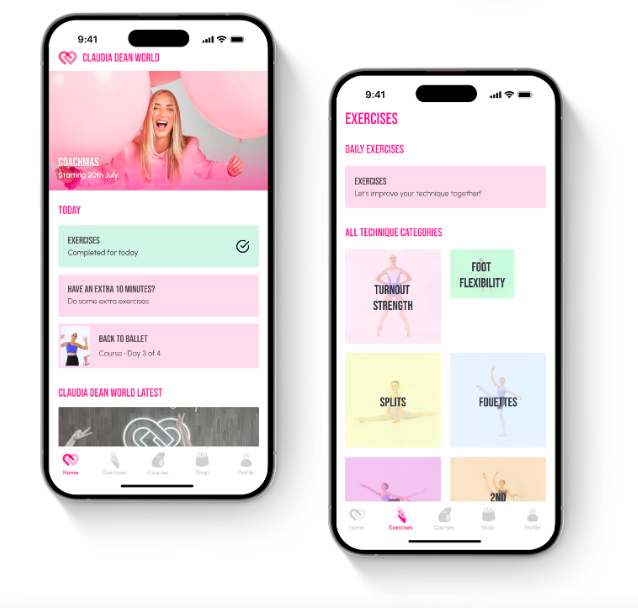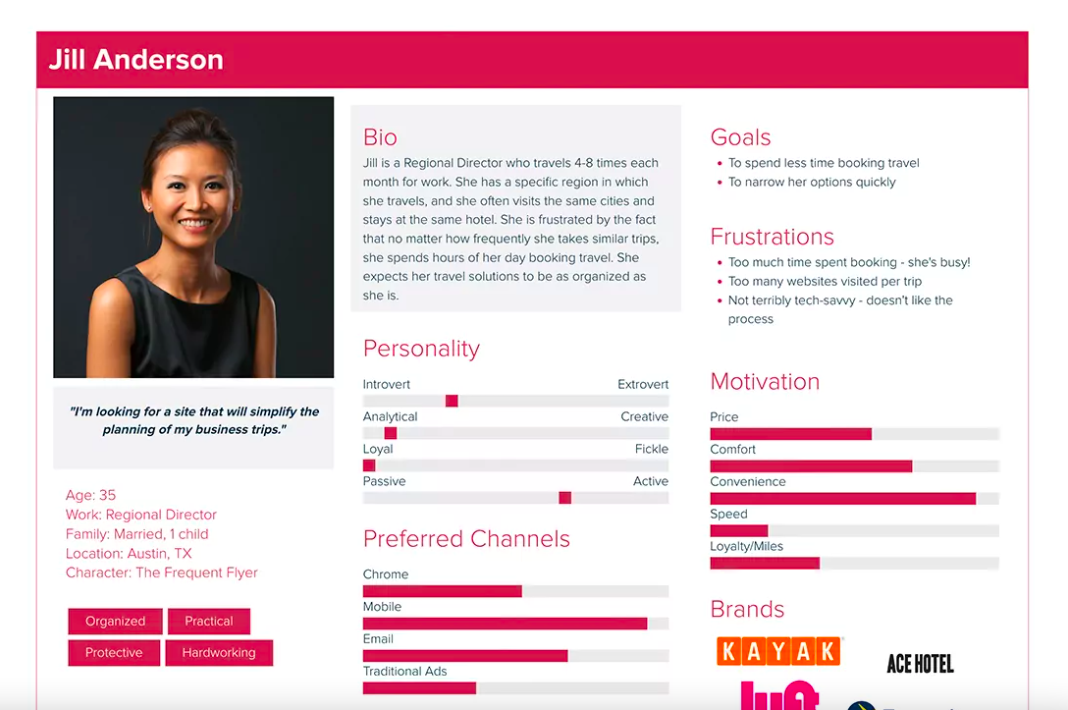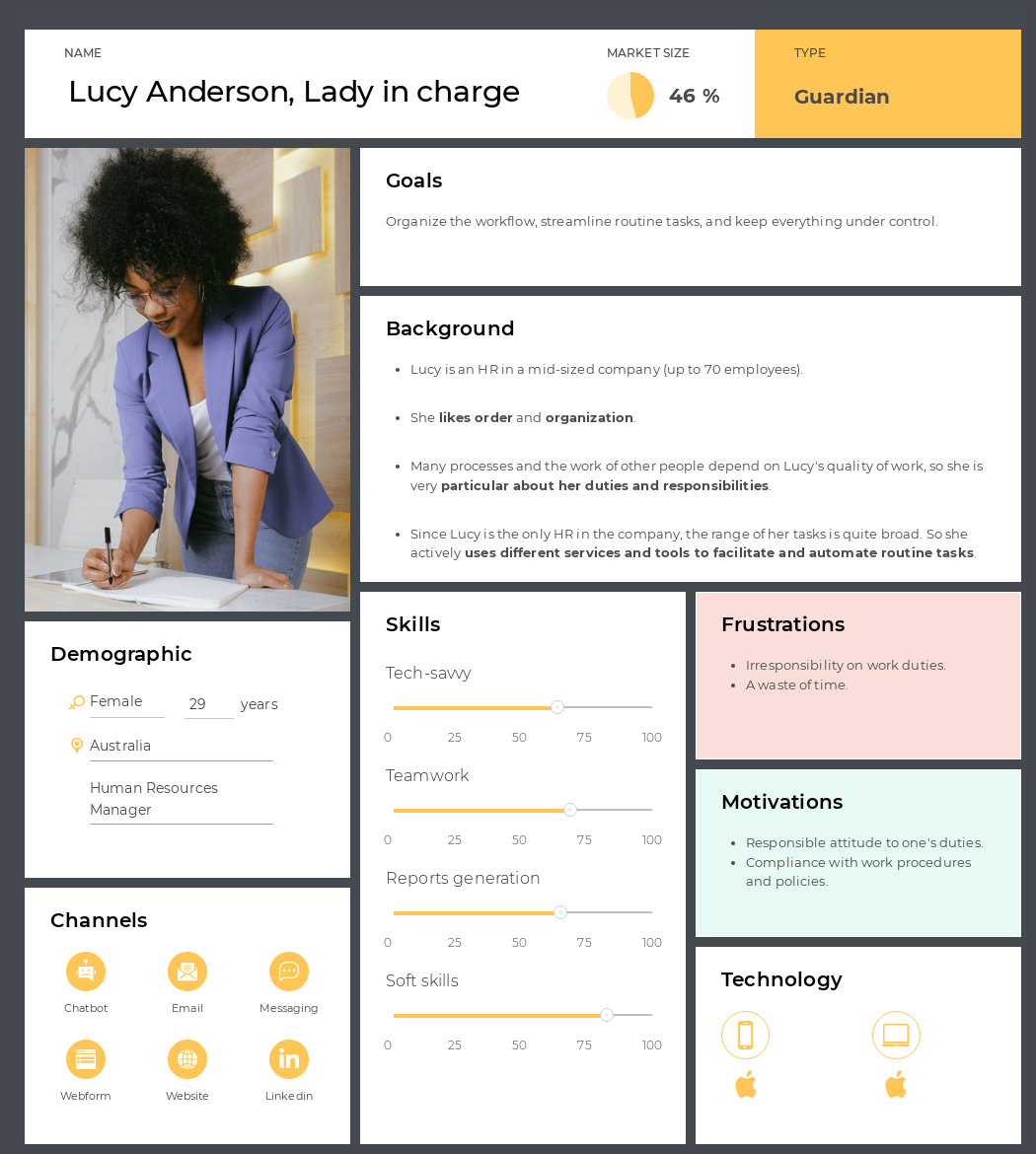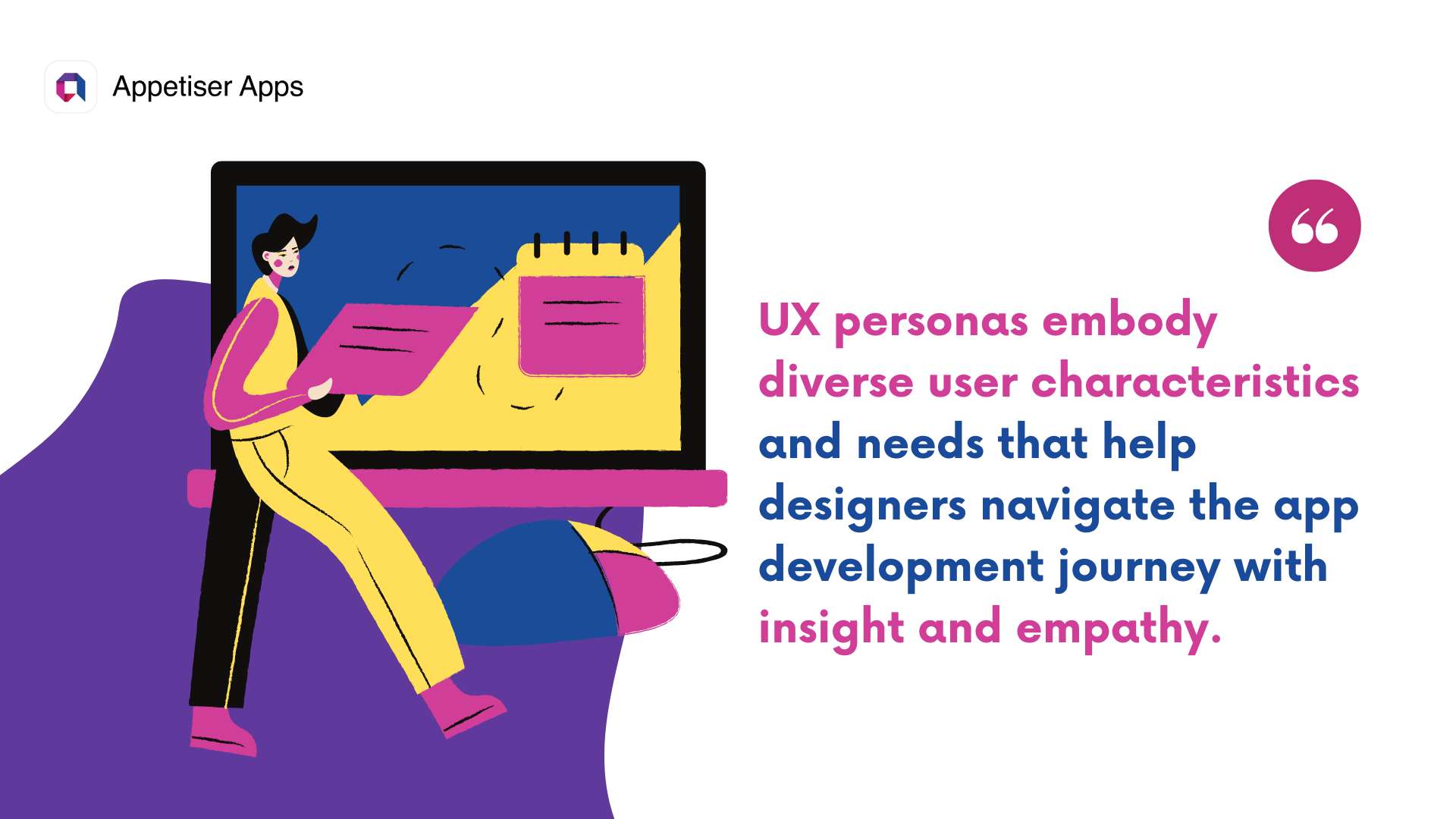Creating Personas for UX to Deliver Customer-Centric Apps (With 5 Examples)

Imagine stepping into the world of Pixar’s “Inside Out 2,” where every character represents a different emotion, guiding the protagonist through life’s challenges. This portrayal of human experiences is akin to how user personas function in user experience (UX) design for apps.
Just as Joy, Sadness, and the rest of the emotions provide a complete understanding of Riley’s personality, well-crafted UX personas give us a comprehensive insight into your app users to build successful apps that truly resonate with their needs.

Source: PixarPost
To win app users’ hearts, you must capture their challenges and desires and translate those into tangible app interfaces that make their lives easier.
In this article, I’ll unpack the process of creating effective UX personas tailored for app development. We’ll explore the steps needed to develop these personas, plus five UX persona examples to get inspiration from, ensuring your app exceeds user expectations.
But first, let’s define UX personas and why they are a must in the app design and development process.
What are personas for UX?
Personas for UX designs are fictional but realistic representations of your target audience, capturing their needs, goals, and pain points. UX researchers and UX designers, who are usually in charge of these personas, can tailor solutions to meet the users’ requirements.
Personas foster empathy and inclusivity and place the user at the heart of the design process. They guide decisions and ensure features align with user goals.
A user-centered design approach creates a compelling user experience, increasing quick adoption and app retention. But without personas for UX, app designs risk missing the mark, causing frustration and product failure.
Here’s a helpful video from UXPressia, a customer experience mapping platform, unpacking the basics of personas in UX designs.
Why does creating personas for UX matter in app development?
User personas are indispensable in app development as they provide alignment with user needs and goals.
Here’s why personas are essential for UX and app development:
- ✅ Drives user-centered design. User personas embody app users’ diverse characteristics, behaviors, motivations, and affinities, ensuring a design focus on user needs. This approach boosts app usability and adoption rates significantly.
- ✅ Aligns teams on user needs. Personas provide a shared understanding across teams, such as design, development, and marketing, about who they are building the app for. This alignment will result in consistent decision-making tailored to the personas’ goals rather than assumptions.
- ✅ Facilitates feature prioritization. By deeply understanding user personas, teams can prioritize product features that directly address the personas’ core needs and workflows. This prevents task bloat and ensures the app solves key problems for its target users.
Imagine you’re making a cake for your friends. By knowing exactly what each friend likes and needs, you can bake a cake that everyone will love. You make sure everyone helping prepare it knows who it’s for and decide which ingredients to use based on what your friends enjoy the most.
So, I’m done explaining the icing on the cake. Now, let’s move on to the most important part of the article, as I’ll walk you through the UX persona guide.
How do you create UX personas for apps?
Crafting personas for UX is like creating the characters of a story or a novel. But of course, in this context, the purpose is to design apps that will delight users.
Here’s a quick run-through of the steps:
- Define your user research objectives
- Conduct targeted user research
- Synthesize and segment your data
- Create detailed user personas for UX
- Integrate UX personas into app design and development
1. Define your user research objectives
Setting clear research goals helps align user feedback with the app’s main goals, ensuring smart design choices that are key to the app’s success. These objectives unveil and trace your target audience’s distinct user segments or personas.
Clearly defined objectives dictate the appropriate user research methods, like interviews, surveys, and usability and accessibility testing. This targeted strategy ensures you’re gathering relevant insights to craft detailed personas, optimizing time, and maximizing app development costs.
Additionally, establishing unified research objectives upfront ensures that all involved parties—UX researchers, app designers, app developers, and product managers— are on the same page. This shared vision encourages seamless collaboration and user-focused decision-making throughout the app design journey.
2. Conduct targeted user research
Focused, targeted user research is important when you create user personas. It provides key insights into the target audience’s behaviors, preferences, and concerns, which are essential for having impactful UX personas.
By gathering data directly from the target users in the research phase, you can create personas that accurately represent the real users, their goals, motivations, and challenges. This ensures that the personas are not based on assumptions or stereotypes.
So, who’s in charge of this step? UX researchers plan, conduct, and analyze user research, while UX designers work alongside them to set research objectives, contextualize products or services, interpret research results, develop personas, and shape the mobile app design process using user insights.
Here are some ways on how to gather app user data:
- 📣 Surveys. Online or in-app surveys can collect quantitative and qualitative data from a large number of users. Surveys can help understand user demographics, preferences, and behaviors.
- 📣 Interviews. One-on-one in-person or remote user interviews can provide in-depth insights into users’ motivations, goals, and experiences with the app. Interviews allow for follow-up questions and probing for deeper understanding.
- 📣 Analytics. Analyzing app usage data, such as user flows, engagement metrics, and conversion rates, can provide valuable insights into user behavior and identify areas for improvement.
- 📣 Usability testing. Observing users as they interact with the app can reveal usability issues and areas for improvement in the user experience.
Always remember that your personas for UX must be based on research. PlaybookUX suggests speaking to five users per product type. For example, if you have identified two products in your business, then you talk to five users for each product, which would be ten users.
Make sure you also conduct moderated sessions with users to unlock the opportunities for follow-up questions and probing to create accurate narratives about your users.
Here’s a helpful video explaining how to do the research when creating multiple UX personas.
3. Synthesize and segment your data
Synthesizing and segmenting data is important in creating user personas because it helps identify distinct user groups with shared characteristics, behaviors, and needs.
By analyzing data with a focus on app usage patterns, you can uncover meaningful insights that inform the persona development process.
Imagine you have a big box of toys and you want to organize them to see which ones are similar and which are different. By grouping toys that are played with in similar ways, you can understand how each group is used and enjoyed. This helps you give the right toys to each group of children based on their preferences.
Understanding your app users helps you become more empathetic with what they need. If you have an app idea, it’s also essential that the design and development team understand you and your vision.
📣 That’s exactly what our app design and development did with one of our clients, Claudia Dean.
We tailored Claudia’s app to reflect her unique qualities, prioritizing aesthetic appeal and a smooth user experience to meet users’ expectations. Leveraging our custom baseplate technology, we accelerated mobile app development to give Claudia’s app a strong foundation for success.

4. Create detailed user personas for UX
By now, you have defined the research objective, conducted targeted research, and collected and analyzed the data you need to craft the user personas. It’s time to put everything into action.
Here are the key elements to include in a comprehensive user persona:
User profile
- Basic information. This includes name, age, gender, location, occupation, education, and income. It helps you create a realistic and relatable identity for the persona.
- Photo or illustration. This element adds a human face to the persona, making it more relatable.
User scenario
- Context and motivation. Describe the situation, task, goal, and expectation the persona has when interacting with your app. This will prompt you to understand the problem or opportunity your product addresses.
User needs
- Specific requirements and desires. Based on user research such as surveys, interviews, observations, or analytics, prioritize the features and functionalities of your product.
User pain points
- Challenges and frustrations. Identify the gaps or barriers that prevent the persona from having a positive experience. It’s easier to pinpoint the areas for improvement and innovation.
User journey
- Sequence of steps and interactions. Map out the touchpoints, actions, emotions, and outcomes the persona experiences. It lets you visualize the flow and logic of your app.
User feedback
- Direct or indirect input. Include quotes, testimonials, ratings, reviews, comments, or suggestions. Validate or invalidate assumptions and measure the impact of your product.
What tools and templates do you use for building UX personas?
Depending on your preference for tools, you can use different templates and SaaS apps to start creating your persona.
Here are some of the few that most UX designers use:
1. Xtensio: Offers customizable templates for goals, frustrations, and personality

Source: Xtensio
Offers a customizable user persona template that allows you to add charts, graphs, images, and videos. It supports real-time collaboration and can be easily shared or downloaded.
2. Visme: Lets you create visually appealing templates using drag and drop editor

Source: Visme
Visme offers an intuitive drag-and-drop editor that makes it easy for users to create detailed and visually appealing UX personas without needing advanced design skills. This accessibility ensures that team members with varying levels of technical expertise can contribute to the persona-creation process.
3. Miro: Makes brainstorming and mapping personas efficient

Source: Miro
Miro’s user persona template helps capture relevant information about your target audience. It supports brainstorming and collaboration, making it easier to create detailed personas with their challenges and goals.
4. UXPressia: Enhances accuracy of UX personas

Source: UXPressia
UXPressia is an online persona builder tool with sections for different content types. It supports the integration of live data, which can enhance the accuracy and relevance of the personas. Additionally, it allows for exporting personas in multiple formats, including PNG, PDF, and PPTX, although some export options may be limited to paid plans.
5. Venngage: Gives life to your UX personas with beautiful designs and templates

Source: Venngage
Venngage is an efficient tool for creating UX personas due to its combination of customizable templates, visual design capabilities, ease of use, and collaborative features. These attributes make it an excellent choice for teams looking to create detailed and visually appealing user personas.
Now that you have a persona for the UX, it’s time to take it to the next level…
5. Integrate UX personas into app design and development
This step involves incorporating the characteristics, behaviors, and needs of the identified user personas into every stage of the process. It includes aligning design decisions, feature prioritization, and user flows with the goals and preferences of the personas.
Take a look at this user flow of the MyDeal app that was built by our team:

With UX personas, UX designers and app developers can create better user flow on the eCommerce app.
Since the personas include app users’ habits, needs, and motivations, they also guide the design and development team’s decisions about the features that will benefit the users—say, in this context, when shopping on a mobile device.
Of course, when you’re browsing on a category, the logical step is to give the shopper more items to choose from in that category.
An eCommerce app has plenty of features and functions, but with a UX persona on hand, it will flesh out which feature to include or deprioritize while developing the app.
Creating personas for UX is valuable for developers because it fosters empathy. Personas empower them to build intuitive and user-centric app experiences.
Embrace user-centric design for app success
Remember the Inside Out characters I mentioned above?
Just as Joy, Sadness, Anger, Fear, and Disgust represent different emotions guiding Riley through life’s challenges, UX personas embody diverse user characteristics and needs that help designers navigate the app development journey with insight and empathy.

Having the users first in mind is essential in designing and developing apps that can succeed in a competitive app market, aside from visually appealing and colorful app designs. In fact, 90% of smartphone users will likely shop more as long as they have an exceptional user experience.
Got an app idea and wanted to see if it’s product market fit?
Most of the founders and startups we work with also started their journey of bringing their app ideas to life. If you need support, consulting, and clarity, this is where Appetiser excels and always produces remarkable results.
Schedule a free consultation now and take the opportunity to unlock your potential to make an impact and live out your passion.
People also ask
1. What is a UX persona?
A UX persona is a fictional character built on real user data, such as demographics, behaviors, goals, and frustrations. Think of it as your user avatar, a stand-in human you design for. It helps your team stop designing for “everyone” and start designing for someone.
2. When in the design process should I create personas?
The best time is early, during, or right after user research — before you sketch wireframes or interfaces. That way, personas actually shape decisions rather than decorate them. And remember: personas should evolve as you learn more.
3. How many UX personas should I create?
Usually, 3 to 5 distinct personas are enough. More, and you blur the edges; fewer, and you risk missing key audiences. The goal is to capture your main audiences clearly enough that your team can make confident design choices. Over time, you can merge or retire personas as fresh data comes in.
4. Can I create personas without data?
Yes, but you risk designing for made-up people. And if you do, your product decisions could miss the mark. A smart move is to start with assumptions or “proto-personas” to get things rolling, then check your ideas against real interviews, surveys, or analytics. Over time, swap guesses for actual evidence.
5. What’s the difference between proto-personas, qualitative personas, and statistical personas?
It’s basically moving from guess → story → proof. Think of it like this:
- Proto-personas are the “guestimates.” Your team’s best guess with minimal research.
- Qualitative personas are based on actual conversations and observations. You’ve talked to real people. You’ve watched what they do.
- Statistical personas mix both worlds. You start with insights from interviews, then check the patterns across a bigger group with data.
6. What should I include in creating a UX persona?
Start with the essentials: name, photo, goals, challenges, behaviors, and demographics. Then layer in motivators, obstacles, and triggers. These details help your team understand why users act the way they do, not just what they do.
7. How do I make sure UX personas guide real design decisions?
Personas should live in your design process. Bring them into design reviews and ask questions like, “Would Persona X actually use this?” Map them across user journeys and refresh them as you learn. Print them, hang them up, debate with them. Ask what your persona would do, then design for that.

Maria Krisette Lim is a Content Marketing Specialist with 14 years of experience producing web and print ad content. Krisette has a BSBA degree, major in Business Management and Entrepreneurship. When she’s not tinkering with words and punctuation, she’s either curled up with a book while sipping hot tea, playing with her toddler, or tinkering with website builders.



